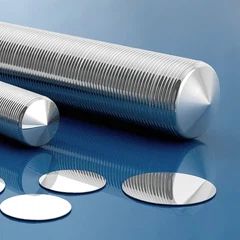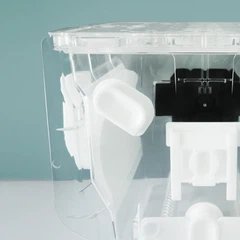Wafer thinning is a key step in semiconductor manufacturing, and its main purpose is to meet the requirements of chip performance, packaging, heat dissipation, etc.
Table of Contents
Thickness of silicon wafer
Advantages after wafer thinning
Wafer thinning process
Wafer thinning technology

1. Silicon wafer thickness
In the front-end process of semiconductor manufacturing, the wafer needs to have sufficient thickness to meet the requirements of mechanical strength and warpage so that it can be handled and transferred within and between devices.
150mm (6-inch) wafer
Standard thickness: about 675 microns
Range: usually between 650 microns and 700 microns
200mm (8-inch) wafer
Standard thickness: about 725 microns
Range: usually between 700 microns and 750 microns
300mm (12-inch) wafer
Standard thickness: about 775 microns
Range: usually between 750 microns and 800 microns
2. Advantages of wafer thinning
In the packaging stage, in order to meet the requirements of the packaging process, the wafer usually needs to be thinned to about 100~200 microns. This is because the thinned wafer can bring the following advantages:
Reduce the package volume: thinner wafers help to achieve miniaturization of chip packaging
Improve heat dissipation efficiency: thin wafers are more conducive to heat extraction from the substrate
Reduce internal stress: thinning can reduce the internal stress generated during the operation of the chip, thereby reducing the risk of chip cracking
Improve electrical performance: thin wafers can make the back gold plating closer to the ground plane, thereby optimizing high-frequency performance
Improve the dicing yield: thinned wafers can reduce the processing volume during package dicing and avoid defects such as edge collapse and corner collapse
3. Wafer thinning process
In order to achieve wafer thinning, mechanical grinding, chemical mechanical polishing (CMP) and other processes are usually used.
The specific process of the thinning process includes preliminary preparation, thinning operations (such as rough grinding, fine grinding, polishing, etc.), and post-processing (such as removing residues, flatness measurement, quality inspection, etc.).
In advanced packaging technologies such as 2.5D and 3D packaging, the required chip thickness can even be as low as 30 microns
4. Wafer thinning technology
1. Mechanical grinding method
Mechanical grinding is one of the most commonly used wafer thinning methods, which removes excess material on the back of the wafer by physical friction. This method is usually divided into two stages: rough grinding and fine grinding:
Rough grinding: using diamond or resin-bonded grinding wheels to remove a large amount of material at high speed
Fine grinding: using finer abrasives and lower grinding speeds to further refine the wafer surface and reduce roughness. The advantages of mechanical grinding are high efficiency and speed, which are suitable for mass production, but may introduce mechanical stress and surface damage.
2. Chemical Mechanical Polishing (CMP)
CMP combines the dual effects of chemical etching and mechanical grinding. Through the synergistic effect of chemical slurry and polishing pad, it removes irregular morphology on the wafer surface and achieves high planarization. CMP can provide higher control accuracy and surface quality, and is suitable for integrated circuit manufacturing with extremely high surface quality requirements.
3. Wet Etching
Wet etching uses liquid chemicals or etchants to selectively remove specific material layers on the wafer through chemical reactions. It is divided into isotropic etching and anisotropic etching. The advantages of wet etching are high selectivity and fine control capabilities, which can achieve nano-level processing accuracy on the wafer surface.
4. Dry Etching
Dry etching uses plasma or ion beams to remove materials, and has the characteristics of high precision and high selectivity. It is suitable for wafer thinning that requires high precision and complex structures.
5. Laser Thinning
Laser thinning technology uses the high energy density of the laser beam to remove materials through thermal or photochemical action. This method can achieve local thinning and is suitable for fine processing of specific areas.











